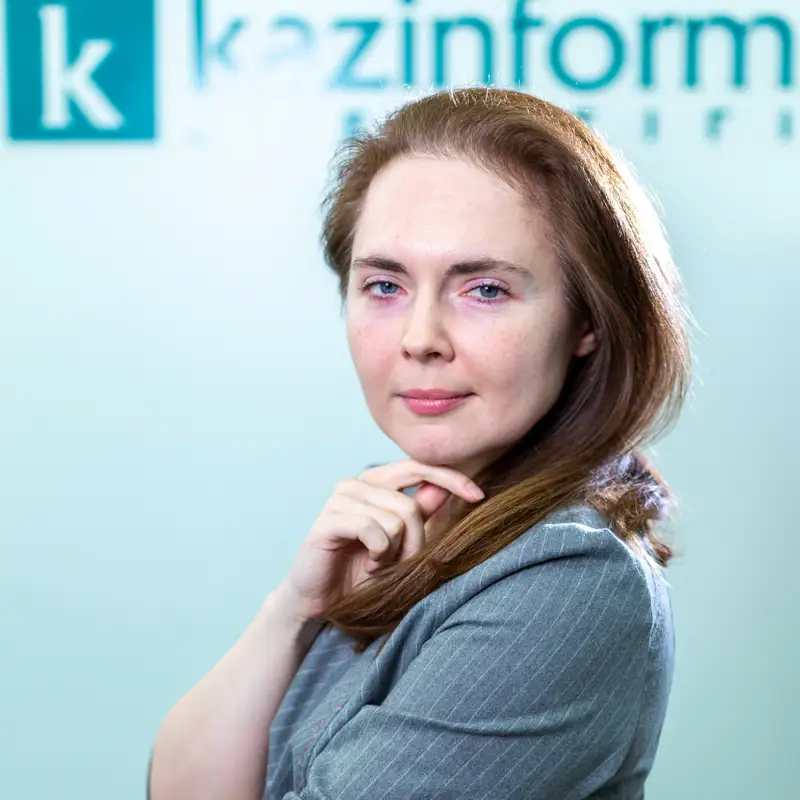Turkistan region to focus on attracting investments, creating new jobs – Darkhan Satybaldy
Turkistan region prides itself on being one of the most robustly developing regions in Kazakhstan. Its tourism, business, agriculture and industrial sectors are booming. However, there are problems that need to be addressed. Locals are concerned by the problems of water and potable water supply, cotton prices, TPP in Kentau. Akim (governor) of Turkistan region Darkhan Satybaldy sat down with Kazinform News Agency correspondent to talk about those problems and more.
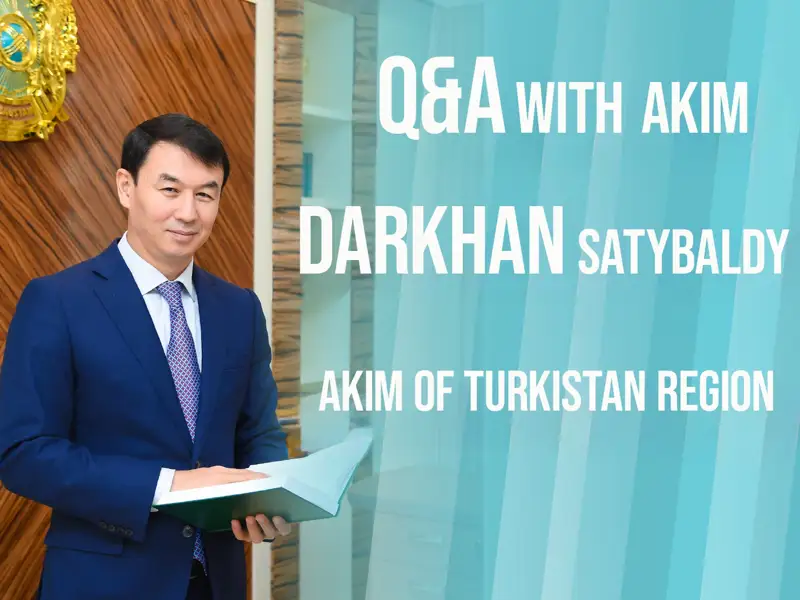
Turkistan city was granted the status of the tourist capital of the Turkic world for 2024. What projects are implemented in that respect?
Turkistan is a spiritual capital of the Turkic world as its history dates back many centuries ago. This city was renowned among European travelers in ancient times. As you may know, it was one of the largest trade centers on the Silk Road. One of the greatest thinkers of the Turkic world Khoja Ahmed Yasawi lived there. The Khoja Ahmed Yasawi Mausoleum situated in the region is one of the world’s most outstanding pieces of architecture. Thousands of tourists from Turkic and other countries flock to our city. Turkistan is of paramount importance for each Turkic country out there.
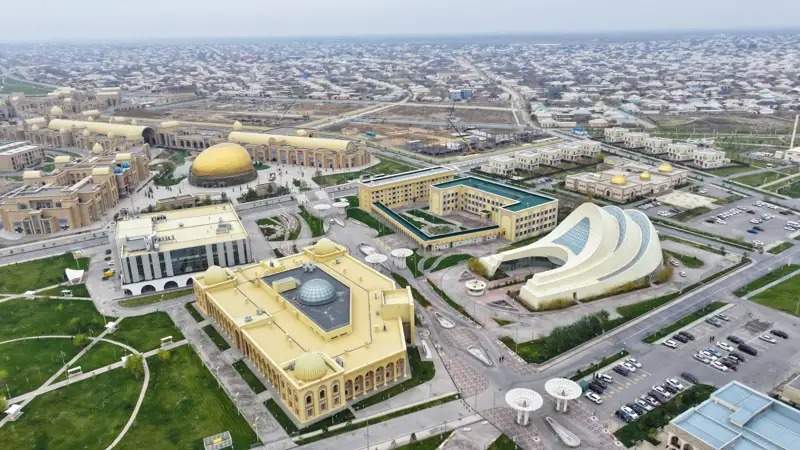
For several centuries Turkistan was the capital of the Kazakh khanate. Many noble men, including 21 Kazakh khans, were buried here. It is a great responsibility to be a governor of such a historic region. I will go to great lengths to develop the region and tackle the problems raised by the President [Kassym-Jomart Tokayev].
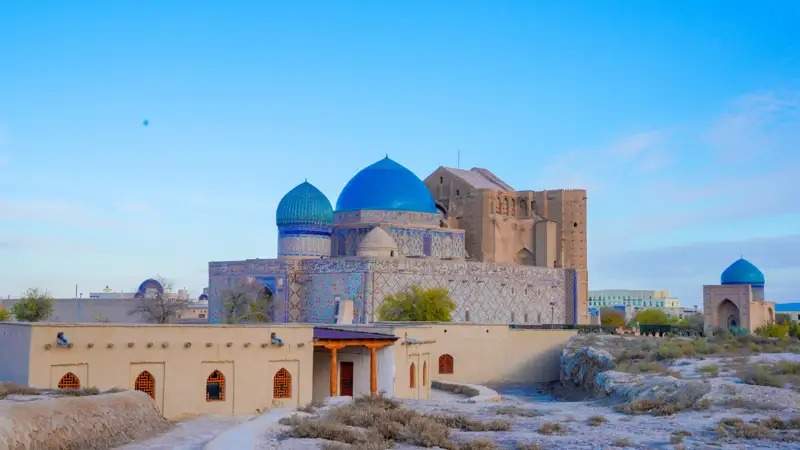
It’s been more than 5 years since Turkistan region was established. The city of Turkistan was granted the status of a regional center. A host of important projects has been implemented ever since. More than 250 buildings have been constructed. Residential complexes, cultural, sport, medical facilities have been put into service.
Among those facilities there are state-of-the-art sport facilities, namely the Turkistan Arena Stadium, the International Tennis Center, the Ice Palace, and the Olympic Center Sports Complex. The commissioning of those sports facilities has greatly contributed to the sports potential of the region. The regional center has already played a host to the Turkic Universiade, the Qazaq Kuresi Asian Cup as well as a number of republican and international sports events. The city stands ready to host large international tournaments.
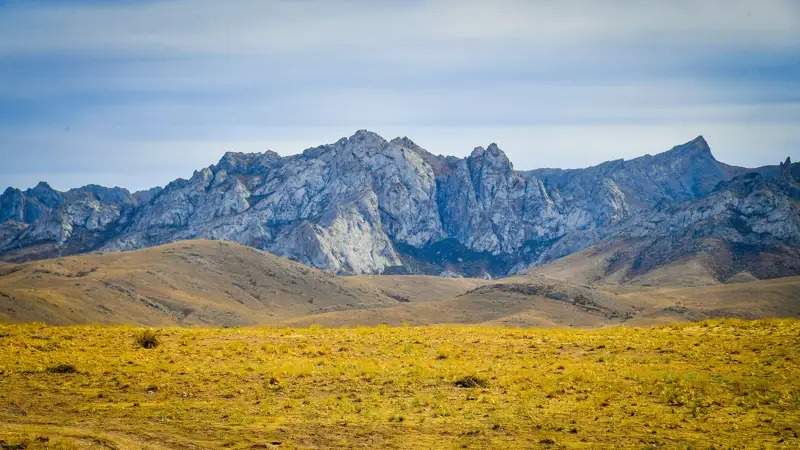
In line with the instruction of Head of State Kassym-Jomart Tokayev the work is underway to grant Turkistan a special status. Last year it hosted the session of the heads of tourist cluster of the OTS member states. Participants of the session designated Turkistan as the tourist capital of the Turkic world for 2024. This decision gave a special impulse to strengthening of tourist ties between the Turkic-speaking countries.
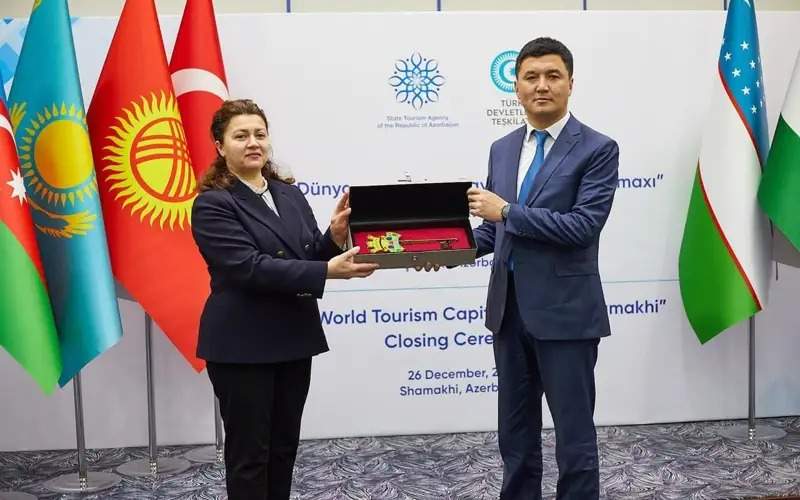
The Kazakh Government pays utmost attention to strengthening of trade and economic ties of the city and all-round development of tourist sector. Launching of international flights through the Turkistan International Airport is of paramount importance in that respect. Presently, three international Istanbul, Al Kuwait and Abu Dhabi and seven domestic Astana, Almaty, Aktau, Aktobe, Uralsk, Karaganda and Kostanay routes are operated through the airport.

It is worth mentioning that as a result of talks with international airlines, the Turkistan-Abu Dhabi flight was launched on January 16, 2024. Launching of such routes helps strengthen trade and economic ties with Turkistan and spurs the development of tourism industry. Two more international and domestic routes are expected to be launched in the future. On top of that, one of the key goals is to increase the dynamics of cargo transportation. In 2023 passenger flow at the airport stood at 360,000 people. This year it is planned to increase that figure up to 450,000 people.
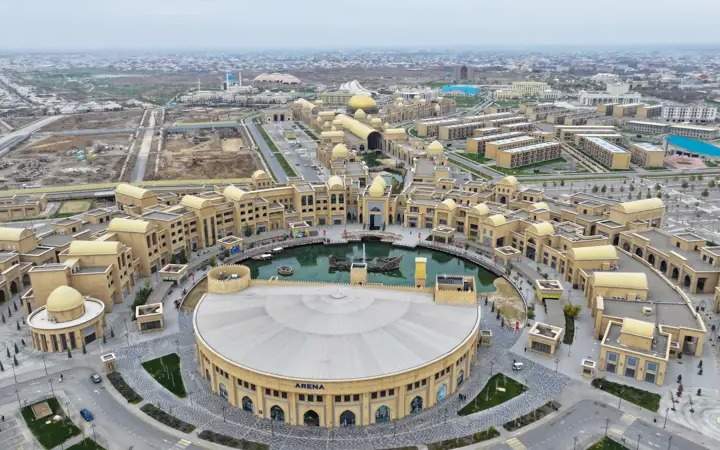
Turkistan region is one of the first regions established in Kazakhstan after gaining independence. The buildings in the regional center are distinct in their architectural design. What beautiful buildings do you plan to build in the future?
Turkistan changes day by day. The buildings are designed using the local colours. The territory of the ancient city formed as a cultural and spiritual center. The projects are built in accordance with the UNESCO requirements. There are 20-floor buildings in the administrative and business part, called as “new” city. In general, more than 250 residential and infrastructure facilities were built in the city. And this work goes on.
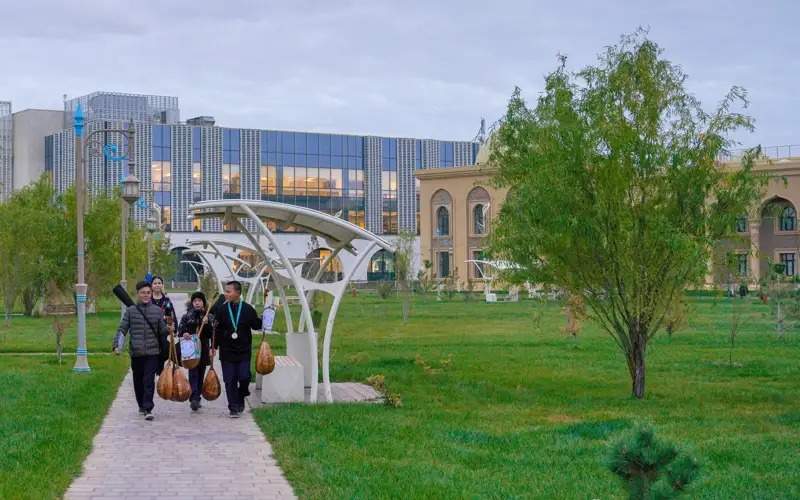
In 2018, the population of Turkistan was 165,400, while today it hit 220,000. With the growth of the population, numerous household issues arise. Timely solution of these problems is the major task for mayors and governors.
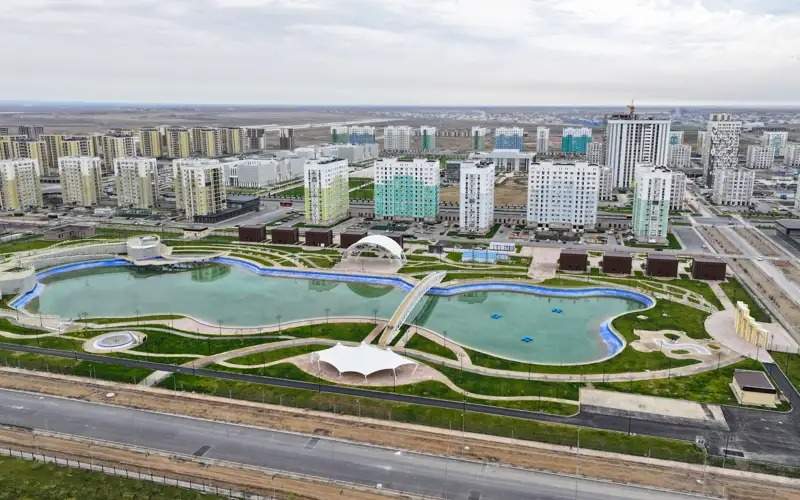
More people here are keen on making the city prosperous. As Turkistan was declared the capital of Turkic-speaking states, a number of projects is planned to be commissioned in 2024.
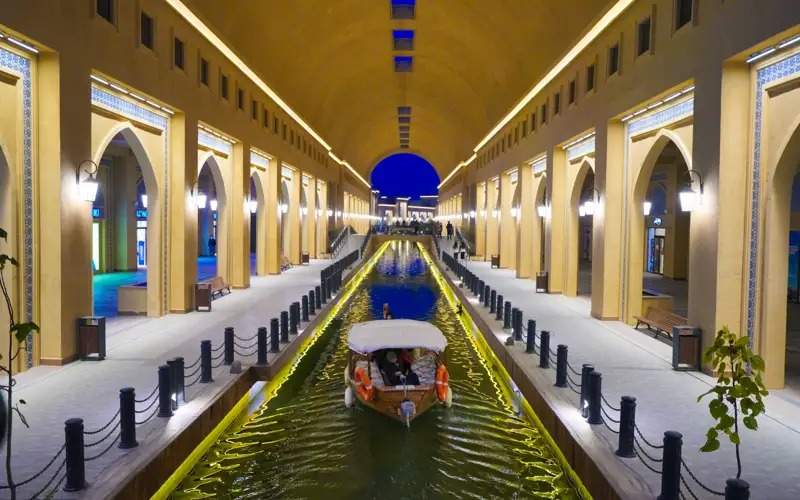
The projects currently under construction in the city are the Turkic World Center, House of Friendship, Center for Applied Arts, Kyluet Spiritual Center with an underground mosque, Expo Center, Eastern Bazaar, an artificial lake, and a central mosque for 5,000 visitors. A sports center named after Bekzat Sattarkhanov, new residential complexes, educational and healthcare facilities are also being built.
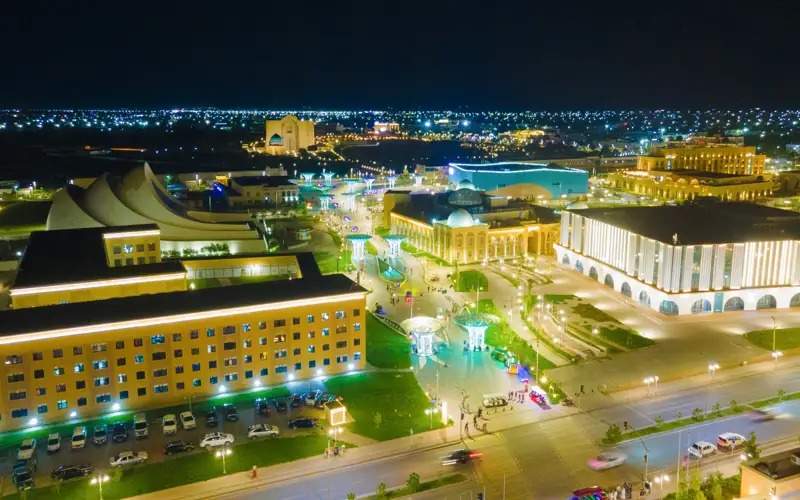
Could you say, please, based on your experience, whether it is possible to make Turkistan region free from a subsidy dependence. What projects can you offer in this direction and which ones are being implemented? One of the most pressing issues for the governors is the attraction of investments to the regions. The governors of districts and relevant specialists visited the People’s Republic of Chine to exchange experience in this field. What are the results of this visit? What major investment projects are planned to be implemented in the upcoming period?
We attach priority attention to increasing people’s income, to the development of processing industry, attraction of investments, identification of tax sources, launching plants and factories. A regional investment headquarters is operating in the region. We work directly with the investors and support their projects.
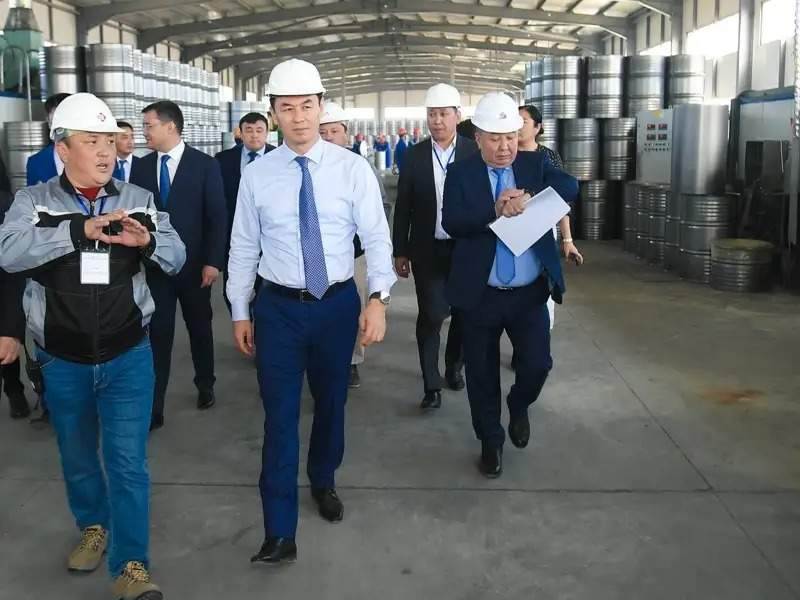
Some 972 billion tenge were channeled into the region’s economy last year, with 705.1 billion tenge of private investments and 266.9 billion of budgetary funds. This is 126.1% more than in the previous period. Turkistan region is one of the most successful ones in terms of dynamics of growth. The 902.2 billion plan approved by the Government beat the target.
As of Q3 2023, the region attracted $492 billion of foreign direct investments, while the yearly plan was $451 billion. In 2024, we set forth a task to raise the volume of fixed investments to 1 trillion 133.8 billion, and we will achieve this target.
In 2023, Turkistan region implemented 56 investment projects woth 126.9 billion tenge. In 2004-2027, the region plans to implement 173 investment projects worth 3.3 trillion tenge in the field of agriculture, machine-building, education, healthcare, industry, construction, tourism and energy.
As for the projects implemented last year, I can mention a solar power plant in Otyrar district, production of diapers and sunflower oil in Sairam district, manufacture of aluminum products in Ordabasy district, PVC granules in Arys and other projects.
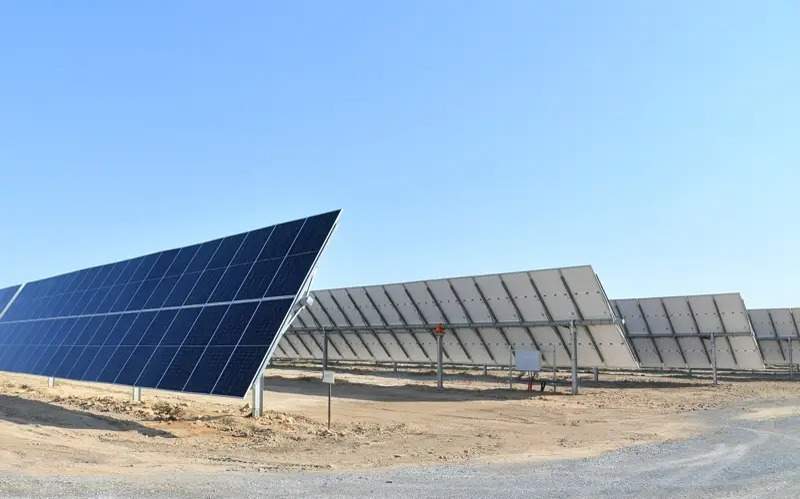
In 2023, we had talks and negotiations with about 100 foreign and domestic companies, and organized business trips with the entrepreneurs of China, Uzbekistan and Australia.
This experience will be applied in processing industry as well. We plan to visit Türkiye, Russia, China, Uzbekistan, Iran and Vietnam. Processing sector is in our spotlight. Last year’s output in the sector made 437.8 billion tenge. This year we plan to raise industrial output to 1.2 trillion tenge, while production volume in processing industry is set at 510 billion tenge.
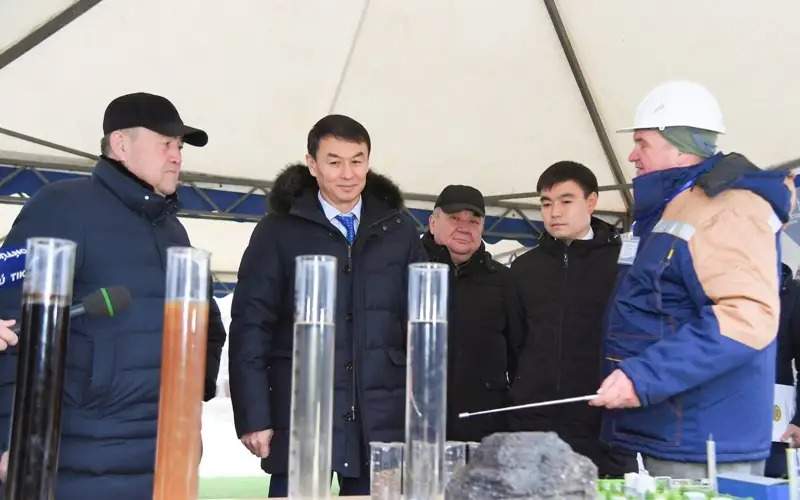
We launched 20 investment projects in processing industry amounting to 30.2 billion tenge, including cotton processing, manufacture of construction materials, milk processing, production of sausages, poultry meat and eggs, a garment factory etc.
In 2024, we plan to implement another 12 investment projects in processing industry and spend 19.5 billion tenge on them. By supporting investment projects and rendering financial assistance to businesses, our major requirement is to employ locals. In 2023, SMEs employed 45,441 people. 292,620 are working in SMEs to date.
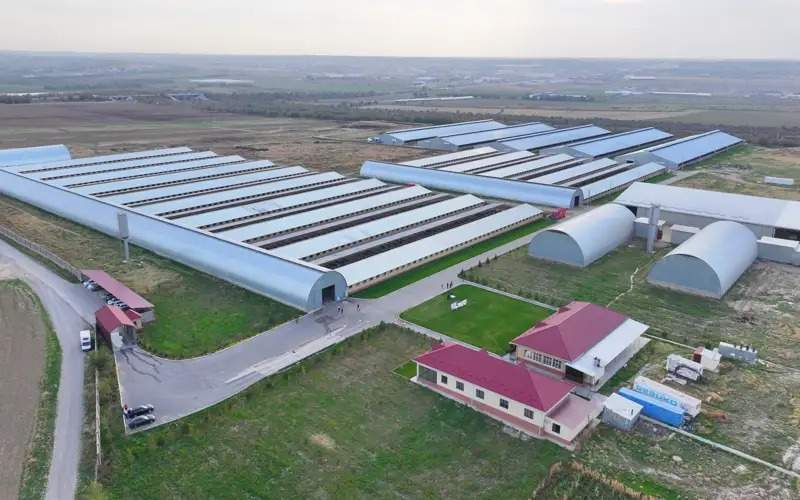
To study Chinese experience in this field, we sent a group of local governors mayors to Shandong, Urumqi, Guangzhou, Zhōukǒu, Henan, Yiwu, Wenzhou, Liaocheng, Liaoning cities. Nine Kazakh-Chinese investment projects have already been launched in the region, including a furniture factory in Turkistan, raw cotton processing and sorting plants in Shardara and Keles districts, cotton processing plant in Maktaaral district, solar power station construction in Baidibek district etc. The implementation of these projects will enable the region to attract nearly 1.2 trillion tenge of investments.
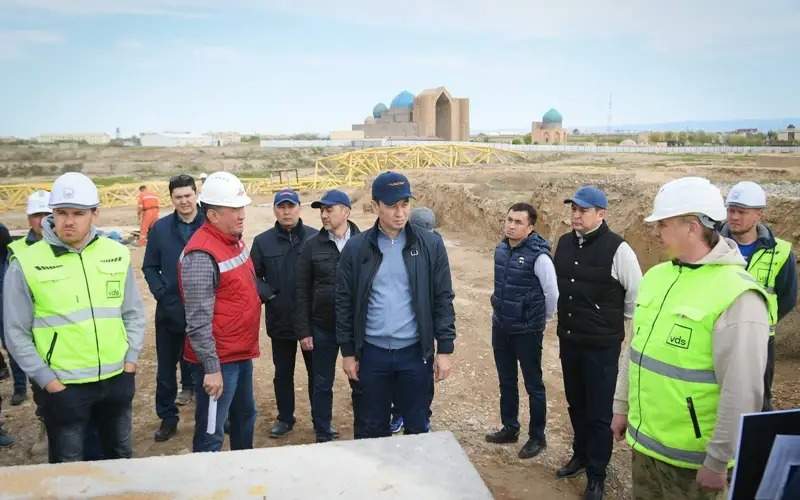
This year, the region plans to open 75 cotton plants and factories, which will create more than 40,000 jobs. Another goal set is to manufacture fabric, oil, clothes and other cotton products.
To generate the region’s own revenue, we need to create new jobs. For this, we need to develop cotton cluster. We are ready to support all those intending to open major plants and factories in this sector. Secondly, we need to improve water saving technology in cotton growing. In general, cotton industry requires large-scale researches. The regional akimat will create conditions for the development of cotton cluster. We have huge plans in this area.
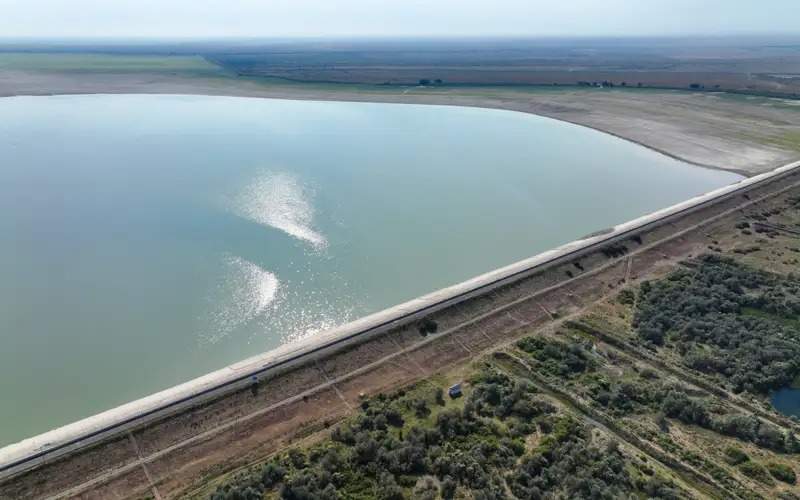
Drinking water remains one of the key problems of the region. People in several districts take drinking water from irrigation canals. When will this issue be solved?
As of today 739, out of 832 rural settlements, including seven towns, are provided with drinking water. 99.8% of the towns and 97% of the villages are provided with safe drinking water. 13.3 billion tenge was allocated from the republican budget in 2024 for the construction of 47 facilities. Construction of 37 facilities will be completed this year, the rest in 2025. Thus, 763 out of 832 rural settlements will be provided with tap water, and 13 water supply systems will be updated.
To ensure 100% water drinking supplies the action plan for providing Turkistan region with water for 2023-205 was approved. As a result, 93 rural settlements will be provided with drinking water.
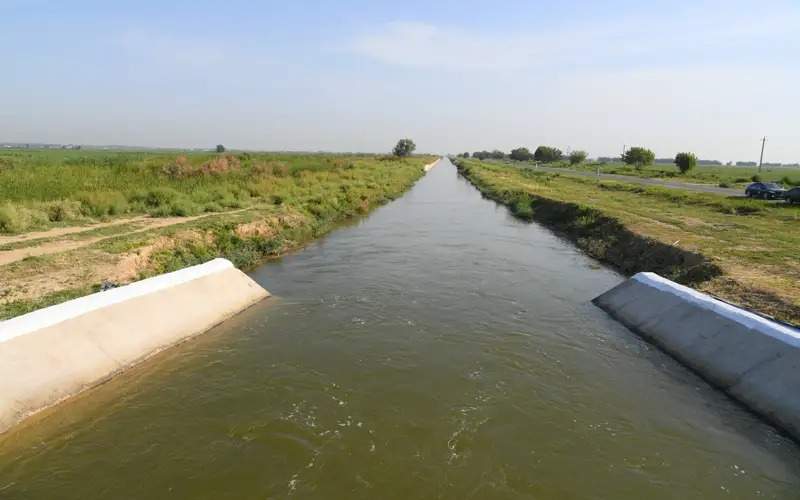
How irrigation water situation which is key to villagers will be regulated during summer?
Agriculture of Turkistan region holds a special place since 13.3% of the country’s agricultural output falls on the region. The region has the most favorable conditions for the development of the agrarian sector climatically and in the context of the availability of labor.

Irrigation water shortage and cotton price volatility remain one of the major issues of the region. Crop acreage of the region makes 870,000 hectares, including 552,00 hectares of irrigable lands. The region’s total annual water use limit is 4.4 billion cubic meters. New water reservoirs are being built, water-efficient processes are being introduced, and existing water facilities are being restored to decrease irrigation water use.
Construction of Baidibek ata and Boraldai water reservoirs will resolve the irrigation problem of 67,000 hectares of planting acreage in four districts and Turkistan. Last year 680 million tenge was allocated from the regional budget for the construction of Baidibek ata water reservoir. This year the funds were allocated from the republic budget.
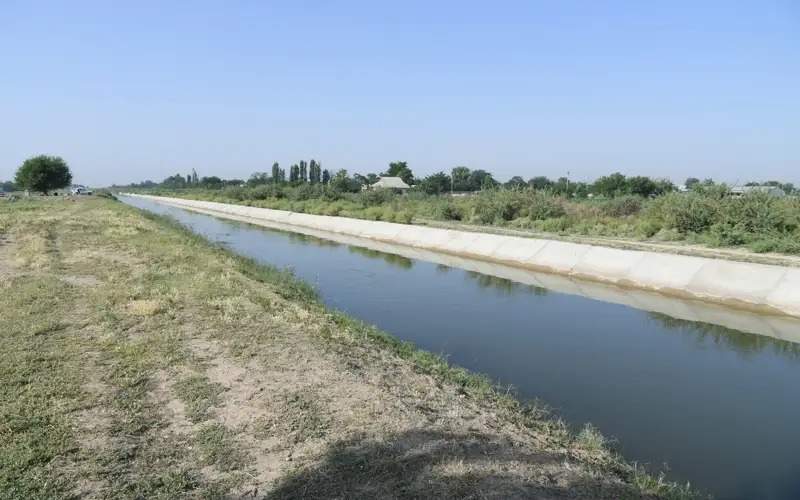
Maktaral and Zhetysay districts mainly face irrigation water shortages due to the dependence on the transborder rivers and main channels. Dostyk main channel ships 30-45% less irrigation water for 140,000 hectares of irrigable lands. Therefore, the Government will monitor irrigation water use limits in accordance with the schedule approved at the meeting of the interstate water resources commission.
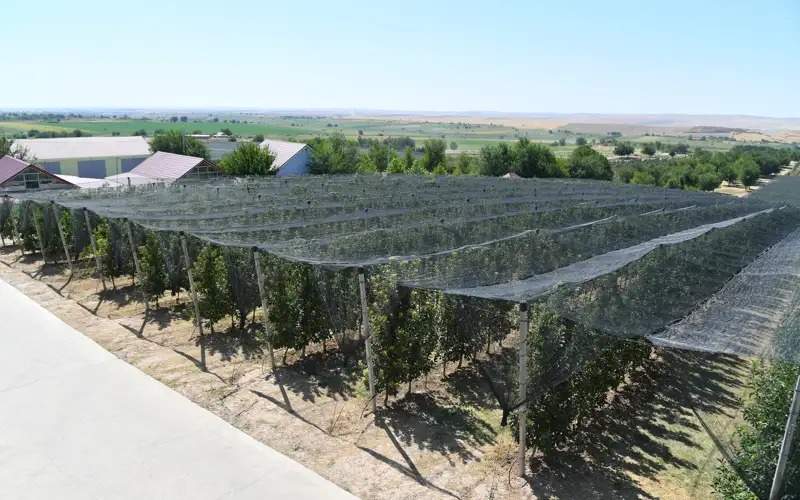
In 2023 Turkistan region took the leading position in agricultural production nationwide. However, there are still many unsettled issues. One of them is the problem of cotton growers. Cotton price is debated each year. Are there any ways to solve this problem?
Turkistan region is the only cotton-growing region of Kazakhstan. There are 25,000 farm organizations with 70,000 workers. Since 2022 disruption of logistics networks and growth of transportation expenses amid the global geopolitical situation has negative impact on the interest of international trading companies in Kazakhstan’s cotton market.
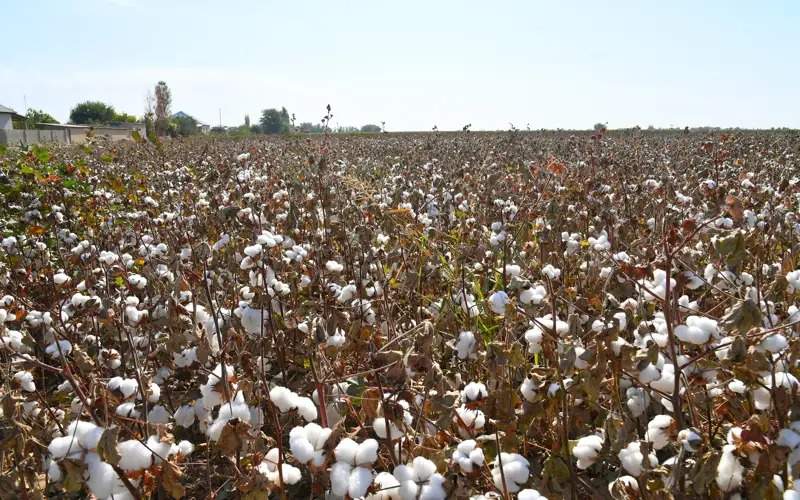
It also led to a raw cotton price decline. In 2023 the cotton acreage made 111,400 hectares that is 13% of the total cultivated area. The region harvested 318,000 tons of raw cotton with a yield of 27 centners per hectare. This year area under cotton was reduced by 6,400 hectares to make 105,000 hectares.
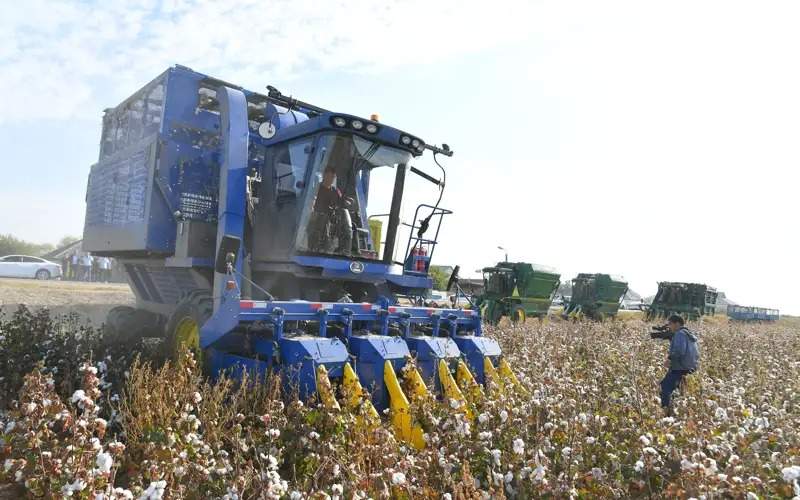
The 2027 regional cotton sector development and cotton and textile cluster roadmap was approved. It includes diversification of cultivation area, providing seeds, introduction of new technologies, and development of the cotton cluster. Nine clusters including 75 plants and factories will be built up under the roadmap. It will generate 41,900 new jobs and eliminate full dependency on cotton prices.
As of today, the development of six investment projects worth 121,600 billion tenge kicked off in the region. The enterprises will be created in Maktaaral, Zhetysay, Shardara districts and Arys town.
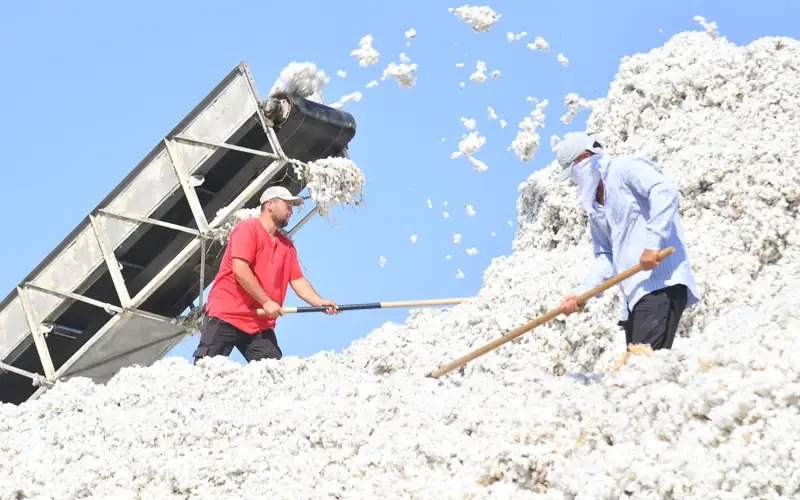
Kentau is the only single-industry town in Turkestan region. The thermal power plant no.5 accident caused worries among the citizens. There are still heating complaints among the city’s residents on special networks. What is the reason? There is also the talk about the construction of a new thermal plant in Kentau. Is it possible?
The thermal power plant in Kenatu was built 90 years ago. Its wear and tear reached 85%. Last time it underwent the overhaul in 2012. The plant provides heating to over 14 thousand users. Four boiler houses were launched during the heating season after being reconstructed for 600 million tenge of sponsor funds. However, it is not enough. Works are ongoing to carry out a major renovation of the plant, which includes transition to new boiler houses. Construction of two new boilers started last year was completed. They are to be commissioned soon. By the yearend, it is planned to build four more boilers designed to serve at least 20 years. It is expected that in 2024 works will have been completed to modernize six boilers.
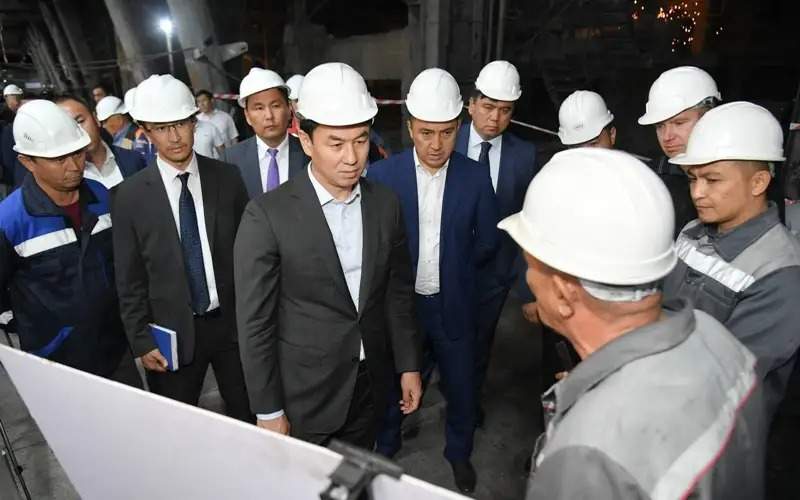
Another solution to the heating issue of the city is transition of the private sector to autonomous heating. Since last year, large-scale work is underway on gasification, with the households having the opportunity to install heating boilers.
There is the need to fix the heating pipes to prevent large heat leakages due to their deterioration. Last year, 4.7 kilometers of heating pipes were repaired for 3.8 billion tenge. This year, there are plans to repair the main heating pipes spanning 1.9km and carry out work to reconstruct 81km of internal heating networks.

Turkestan region is among the leading regions in terms of population and the number of children. Are there any developments regarding three-shift and emergency schools in the region?
Last year, the population of Kazakhstan hit 20 million people, which is the historic event. One of the 20-millioth baby was born in Zhetysai district, Turkestan region. We take pride for that. Turkestan region leads the country in terms of demographic rate. In 2022, 57,429 babies were born in the region. Since the beginning of this year, the region has welcomed around 46 thousand babies.
In the new academic year, the region saw 53,222 children go to the first grade for the first time and will see 29,422 schoolers to graduate. There are a total of 519 thousand children attending 1,029 schools, of which 908 public and 121 private ones.
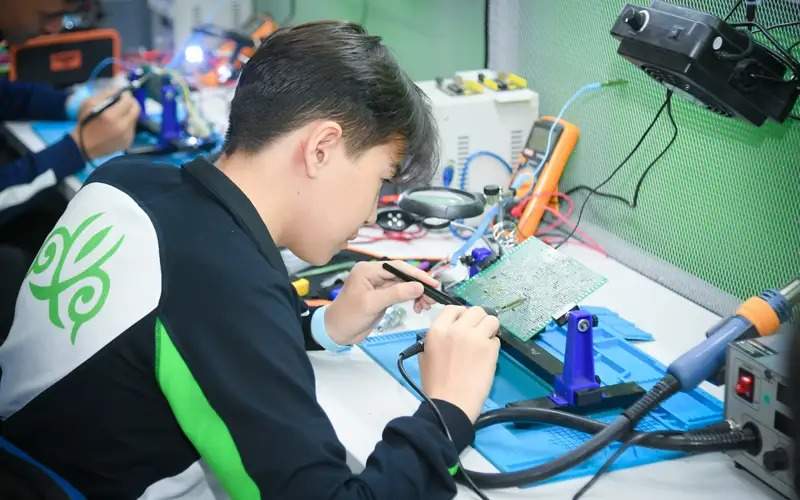
The region still lacks 35 thousand school places. There are four emergency and five three-shift schools, as well as 11 schools that are close to become three-shift ones. To address the issue, 96 schools are set to be built before 2025.
As you often tour the region holding meetings with the population, receive residents and hold an open dialogue with them, what do you think are the most pressing issues facing the region? How the issues raised by the citizens are being addressed and suggestions proposed by the citizens are being considered?
To carry out the presidential decree on meetings between akims (governors) and residents, I met 34 times with residents of all districts and cities according to the 2023 schedule.
Each district and city have an action plan approved to carry out proposals from residents. The action plan includes 293 issues and proposals.
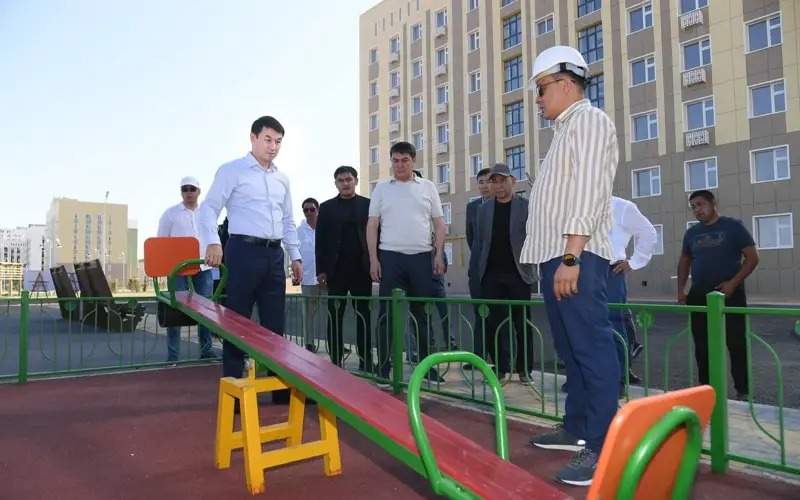
The bulk of the issues relates to the following spheres: infrastructure development – 129 (44%), social sphere – 70 (24%), housing, land, and agriculture issues – 32 (11%), and other issues – 62 (21%).
In 2023, 139 issues or 48% were resolved. As for the 154 issues and proposals left, funds were provided for construction works on 78 or 51% of the issues and proposals. Work is ongoing on the remaining 76 issues.
During the last expanded session of the government, Kazakh President Kassym-Jomart Tokayev gave a number of instructions regarding the fight against drought. He spoke about the importance of using new technologies to save irrigation water, adopt new methods in work. What are the projects being carried out in the region in this direction?
Turkestan region has over 3,000 irrigation channels spanning over 12.3 thousand kilometers and 42 dams. Of these, 75% require repairing. To address the issue, the comprehensive plan ‘Restoration of irrigation systems of Turkestan region before 2030’ has been developed, which provides for the construction of three new dams, reconstruction of eight waterworks and 40 irrigation systems. In the past five years, 245.1 kilometers of channels have undergone repairs, and 1.1 thousand kilometers of drainage systems undergone mechanical cleaning.
As a result, 61.3 thousand ha of land are now supplied with water and the reclamation state of 45.2 thousand ha of land has been improved. This year, 62km of irrigation channels are to undergo major repairs and 488km of drainage systems are to undergo mechanical cleaning. This will increase the quality of water supplies to 7.8 thousand ha of irrigated land, and improve the reclamation state of 19.4 thousand ha of land.
This year, there plans to sow crops on 873.6 thousand ha of land.
In order to reduce the shortage of irrigation water, the work is underway to introduce water-saving technologies, restore water bodies and construct new dams. As of today, water-saving technologies are in place on 32 thousand ha of land. This year, it is planned to commission such technologies on 22 thousand ha of land. Within the concept, it is planned to increase the area of land with water-saving technologies to 216.3 thousand ha by 2030.
The region has projects being implemented to establish enterprises producing irrigation equipment with the use water-saving technology in the region. Construction of stage one of the BNK Group LTD plant worth KZT4.1bn expected to produce 960 sprinkling vehicles has been launched in the industrial park in Turkestan.
The design of the plant ZHANASSYL worth KZT6.1bn expected to produce drop irrigation units is under development.
As of today, 11 investment projects aimed at introducing water-saving technologies on 10.5 thousand ha of land and in the amount of KZT17.8bn have been designed.
